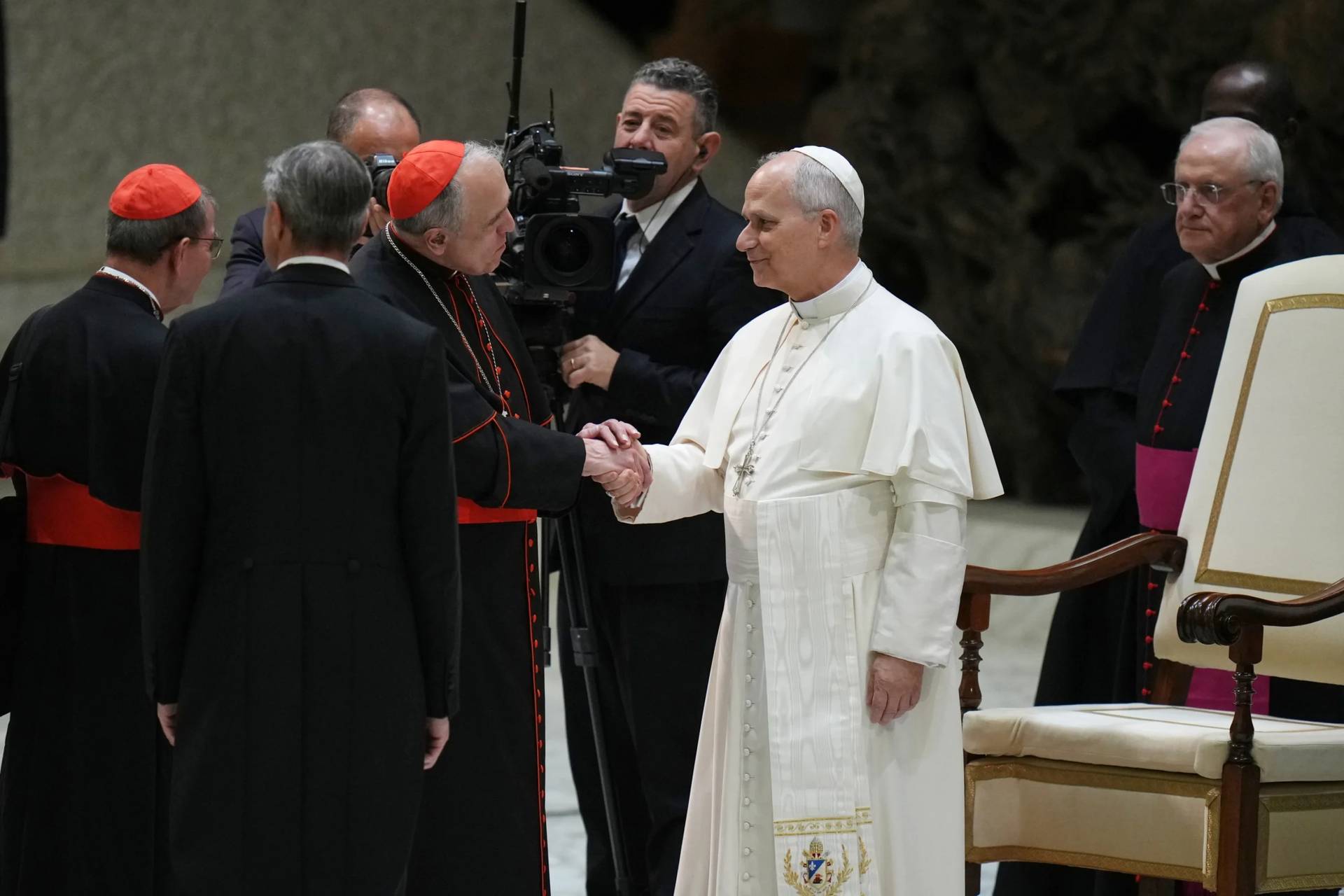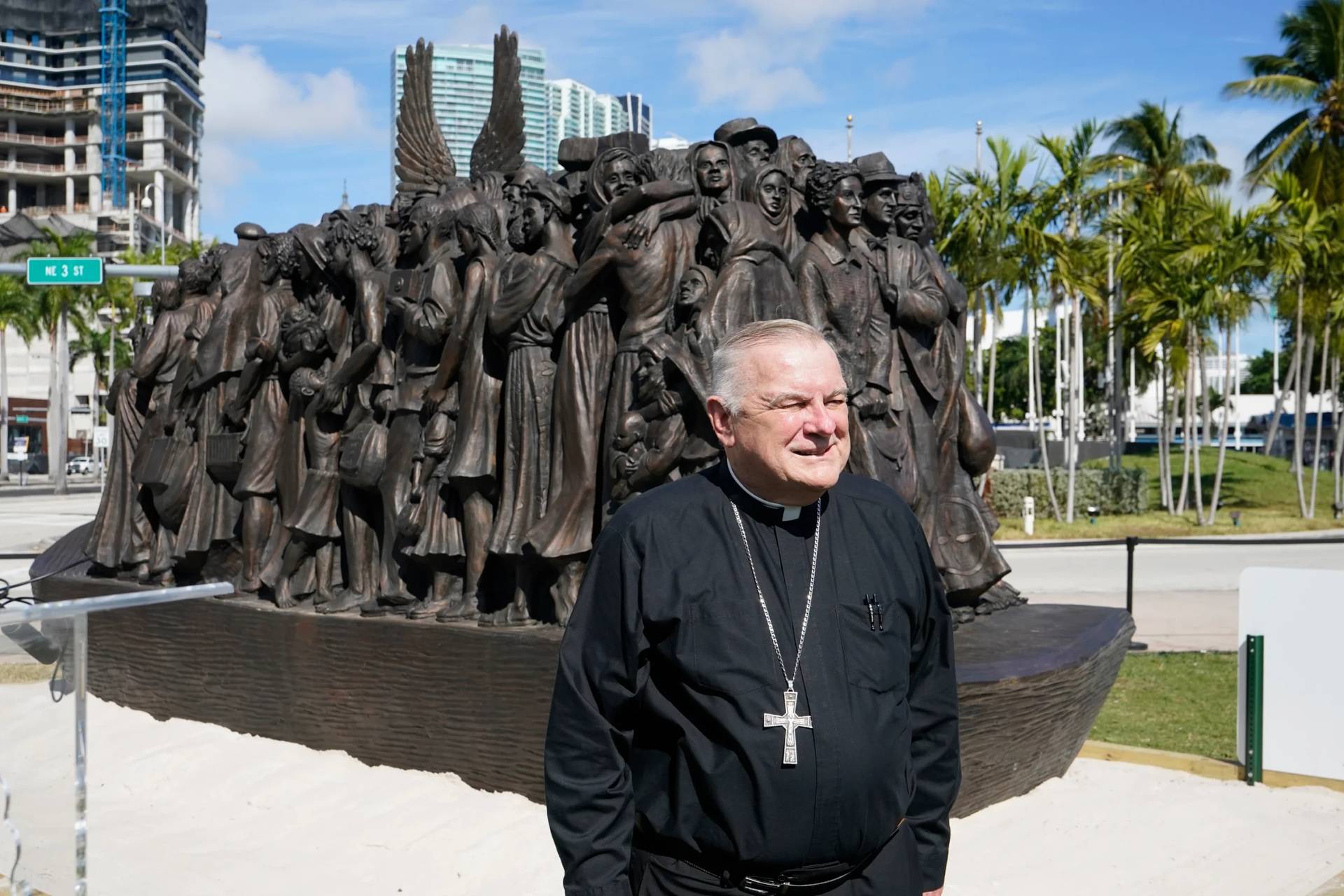ROME – Sometimes on the Vatican beat, there isn’t one massive journalistic entrée to sink your teeth into, but rather a series of bite-sized appetizers. The last few days have brought a few such nuggets, none of which probably warrant a story on their own, but which together make a nice sampler basket of Vatican news.
The Conspiracy Industry
On Tuesday, Rome-based attorney Laura Sgrò presented her new book, Blood in the Vatican, in a gallery belonging to the Feltrinelli publishing and bookstore chain. It’s about a 1998 murder/suicide in the Swiss Guard, in which a young member of the corps named Cédric Tornay allegedly killed his commander, Alois Estermann, as well as Estermann’s wife, before taking his own life.
That, at least, is the official version of events.
Sgrò’s new book points to what she regards as serious deficiencies in the investigation of the deaths to argue that the Vatican is engaged in a cover-up. In that sense, it’s nothing new – in the almost 25 years since the events, the Swiss Guard murders have generated a staggering variety of alternative explanations:
- Estermann was killed as part of a power struggle between Opus Dei and the Masons for control of the Vatican.
- Estermann was killed by a Vatican assassin because he knew too much about its trafficking operations.
- Estermann was killed because he was a former agent of the Stasi, the East German secret police.
Each of these theories have been laid out in splashy books and magazine articles, and each has been critically examined and, generally, found wanting.
What’s more interesting about the latest entry in this expanding literary genre is that Sgrò is also the lawyer for the family of Emanuela Orlandi, the 15-year-old daughter of a Vatican employee who went missing in 1983, and whose disappearance remains the most enticing Vatican mystery story of the last 40 years.
(The Orlandi case was recently made into a four-part documentary on Netflix titled “Vatican Girl.”)
On hand for the presentation of Sgrò’s book was Pietro Orlandi, Emanuela’s brother, who’s dedicated his life to the search for the truth about his sister, and who’s always insisted the Vatican isn’t coming clean. Also in the audience was Gianluigi Nuzzi, an Italian journalist who’s made a career out of publishing steamy Vatican exposés – he was one of two journalists charged in the notorious Vatileaks affair. Nuzzi’s most recent volume is entitled The Black Book of the Vatican: The Investigation that Reveals All the Protagonists of 50 Years of Secrets, Misdeeds and Mysteries.
The gathering was a reminder that one of Italy’s most enduring industries is Vatican conspiracy theories. There’s a whole professional class of people who devote themselves to the design, production and sale of these theories, which tend to do fairly well in the marketplace.
This observation, of course, doesn’t exclude the possibility that some of these theories may have merit, which has to be established on a case-by-case basis. In addition, the Vatican probably has no one to blame but itself for such speculation, given its well-deserved reputation for being less than forthcoming.
From the point of view of leaders in the conspiracy theory industry, in other words, the Vatican is the gift that keeps on giving.
Explaining the Hack
Speaking of conspiracy theories, a new game is afoot in Rome at the moment of trying to explain an apparent hack directed at the Vatican web site yesterday.
Around 3:00 p.m. Rome time Wednesday afternoon, all the Vatican’s various web sites, from the main institutional home page to the sites for the Vatican Museums and the various departments, all went off-line. Initially a Vatican spokesman tried to brush off the outage, describing it as “network maintenance,” but later conceded that it was actually a response to “abnormal attempts to access the site” – i.e., the Vatican was being hacked.
The spokesman, Matteo Bruni, added that “technical investigations” were underway to try to establish what, or who, caused those attempts at access.
In the meantime, the Italian press abhors a vacuum, so speculation is abounding. For the most part, it’s been focused on the fact that in the past few days, the Vatican has had spats both with Russia and China – Russia over the pope’s comments in a recent interview about the brutality of Chechens and Buryats in Ukraine, China over the appointment of a bishop without the pope’s approval.
Naturally, both Russia and China also have well-deserved reputations for cyberwarfare, making it tempting to connect the dots between these recent contretemps and the problems on the Vatican site. Just a few days ago, a group of Russian hackers reportedly attacked the web site of the European Parliament after it approved a resolution defining Russia as a “state sponsor of terrorism.”
Of course, it’s also equally possible we’re talking about some 16-year-old kid in his parents’ basement, who simply thought it would be cool to see if he could bring down the Vatican’s online operation. The fact that thoughts automatically turn to geopolitics and international intrigue rather than more prosaic (and simpler) possibilities is, once again, a reminder of the vibrancy of the Vatican conspiracy theory industry.
As of early Thursday morning Rome time, by the way, the site was still down … we’ll see what today brings.
Quotes that Weren’t
Pope Francis is such a mesmerizing public figure that many of his words and gestures still have a powerful echo, such as his memorable 2013 soundbite “Who am I to judge?” about gay clergy, which has become a motto for his approach to the LGBTQ community generally.
Yet perhaps precisely because he’s such a point of reference, Francis is also sometimes credited (or faulted, as they case may be) for things he actually never said.
One infamous example is the “dogs in heaven” fiasco of 2014, when the New York Times reported that the pontiff had told a young boy during an audience that he would see his pets again in the next world. In turned out, however, that Francis never said any such thing, and the writer had confused his words with something said by St. Pope Paul VI decades before.
Something similar is going on right now, in the form of a quotation making the rounds on social media and being attributed to Pope Francis. It goes like this:
“Rivers do not drink their own water; trees do not eat their own fruit; the sun does not shine on itself and flowers do not spread their fragrance for themselves. Living for others is a rule of nature. We are all born to help each other. No matter how difficult it is … Life is good when you are happy, but much better when others are happy because of you.”
An Instagram post by a Catholic priest in the Philippines on Nov. 16 applauding the pope for the passage went viral, and has been reproduced countless times on various platforms. Once again, the only problem is that he never said it.
“It is not a text by the Holy Father, but one of the many phrases that, unfortunately, are attributed to him,” said Nataša Govekar, director of the theological-pastoral office of the Vatican’s Dicastery for Communications, in an email response to the fact-checking site “Lead Stories.”
According to the report on “Lead Stories,” scholars say the quote probably has roots in an old Sanskrit proverb. Tom Ascheman, president of the Divine Word College, a Roman Catholic seminary in Epworth, Iowa, said the quote is from the Indian subcontinent.
If you’re Pope Francis, none of this probably is to your liking. God knows there’s enough controversy and blowback over what the pope actually says and does, there’s no need to important additional ferment through false attributions.
















